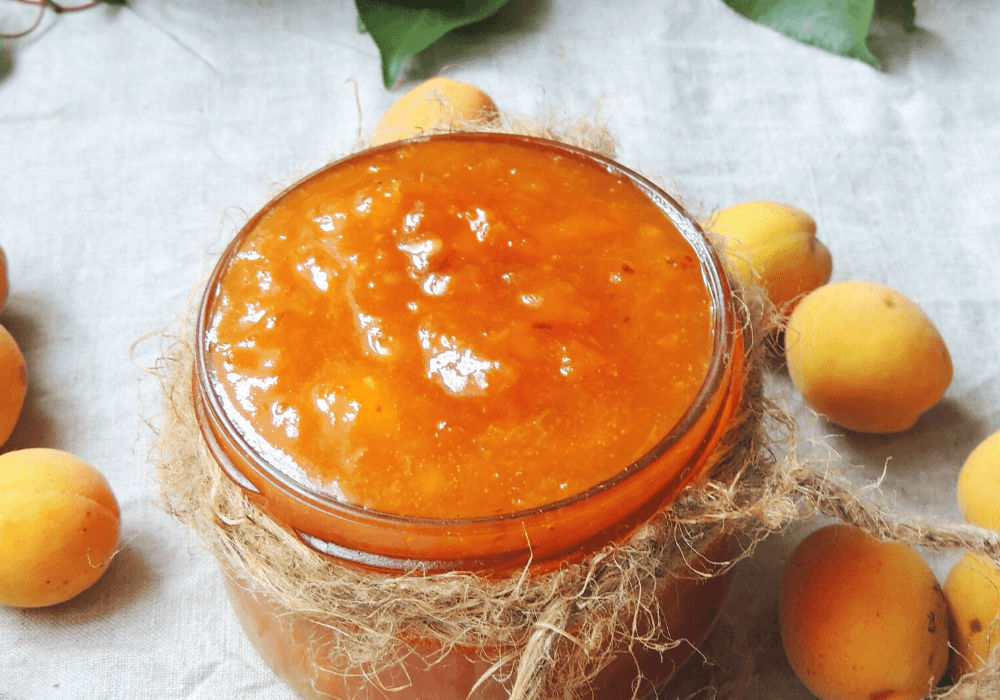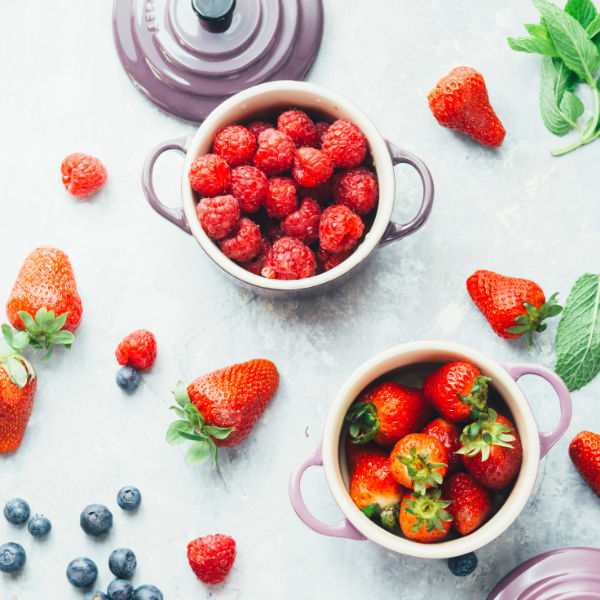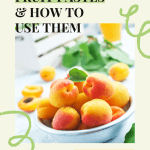Refined sugar vs. unrefined sugar? Highly processed vs. unprocessed? Highly refined vs. whole food sugars? With all the different names for sugar, how are we supposed to decipher the truth from the nonsense?!
Sugar is a tough subject because there’s so much conflicting information out there. It’s hard to sort out the b.s. from the truth, I get it! It’s vilified in health circles, and for good reason, as it contributes to a range of illnesses! At the same time, sugary sweets remain a firm fixture of our culture. Need some comfort after a long day? Grab a donut on your way home. Want a sweet snack for your movie marathon? Have the cookies. Looking for a weekend project? Bake those cinnamon rolls.
But desserts and sweet snacks aren’t the only places you find sugar.
Sweetness is one of the five primary tastes. Aside from its obvious use in desserts, sugar helps build complex flavors in savory food and balance out the other flavors in a dish.
Often, sweetness in savory foods comes from refined sugars like cane sugar, brown sugar, high fructose corn syrup, golden syrup, etc. The good news is, it doesn’t have to!
You might be reading all this and wondering what the problem with adding sugar is. Isn’t fruit loaded with sugar too? And that’s healthy, right?

Here’s the Deal with Sugar
Like other elements naturally found in food, the whole plant (ie fruit) is healthy. Just look at whole grains, which have loads of proven benefits, for example. While eating whole grains is a proven healthy thing to do, eating those same grains in processed versions has almost none of those benefits!
The same is true for sugar.
When sugar comes in its whole package (i.e. fruit), the body knows how to process and break down the sugar in a healthy and stable way. How does it do this? Well, first of all, our bodies are freaking SMART! But also, fruit, like all plant foods, contains fiber and water, which are essential to helping the body break down the natural sugars in fruit without spiking blood sugar. When you take the sugar out of the whole food though, you’re removing the protective tools that help the body process sugar effectively.
Here’s a great example:
You’re probably familiar with cane sugar, often just called sugar. It’s a key ingredient in many cake recipes and you probably have some in your pantry right now. But did you know that cane sugar is extracted from sugarcane, a tall reedy plant that looks kind of like bamboo?
In certain parts of the world, people press sugarcane stalks whole through a sort of grinder that squeezes out the juice. Turns out this tall reedy plant has a whole lotta juice stored in it, which is a super tasty, sweet, and refreshing drink!
Although cane sugar can raise blood sugar, increase inflammation in the body, depress the immune system, and has no nutritional value (yep, it does all that!), fresh sugarcane juice does almost the opposite! As only a lightly processed food, it contains water and all the sugarcane plant’s vitamins, plus some fiber, which helps the body process the sugar effectively.
When you take the sugar out of the whole food though, you’re essentially removing the protective tools that help the body process sugar effectively.
Of course, I don’t expect you to cut out refined sugar completely (unless you’re up for the challenge, in which case, full steam ahead!). But by arming yourself with this knowledge, you can start to make healthier day-to-day choices, and maybe save the refined sugars for your birthday cake or celebratory dinner. After all, it’s what we eat daily that has the biggest impact on our health.
So what’s the alternative to cane sugar and all the other refined sugars? Am I about to sell you some fancy new product or tell you to go grow some sugarcane in your backyard? Think again!
Let’s Talk About Whole Food Sugars
It’s all about going back to the basics, which, where health is concerned, means whole plant foods. Yep, those guys again.
As we now know, sugar is naturally present in many whole foods, and fruit has the highest concentrations of natural sugars in the plant kingdom. When fruits are dried, their sweetness is concentrated even further, making them ideal sweeteners in both sweet and savory dishes.
Enter one of my favorite healthy staples to have on hand: fruit pastes!
Fruit pastes sound kind of strange and aren’t that well known, but they’re super simple to make and can be used in lots of different dishes! Fruit pastes are whole-food sugars at their finest–the perfect way to add that hint of sweetness you’re looking for while staying firmly in the whole-foods arena.
What are fruit pastes, you ask?
Fruit pastes are simply dried fruit soaked in water for two hours, then blended into a smooth paste.
You can make fruit pastes from nearly any dried fruit and can vary the thickness by adding more or less water.
TIP: You can use the water from soaking the fruit to blend up the paste for extra flavor and nutrients.
Making Fruit Pastes
Now that you understand the difference between refined sugars and whole-food sugars, and we’ve gone through a quick overview of what fruit pastes are, it’s time to try your hand at actually making them and using them in your cooking!

TO MAKE FRUIT PASTE:
- Add 1/2 a cup of your dried fruit of choice to a ceramic bowl (metal bowls get really hot so they’re not my preference for this)
- Pour in enough boiling water to completely cover the dried fruit
- Let the water and fruit sit for at least 2 hours, or until the fruit is plump and soft
- Strain the fruit, reserving the soaking water, and add it to a high-speed blender.
- Add a few tablespoons of the soaking water to the blender and blend until you have a smooth paste.
- Store fruit paste in the fridge in a sealed container for up to two weeks.
Try these four flavors to get started:
- DATE PASTE: This fruit paste is one of the most versatile. It’s delicious in porridge and adds a delicious sweetness to hearty baked goods like cookies and muffins.
- MANGO PASTE: Mango paste works really well in many Asian cuisines, including Chinese, Korean, Thai, Vietnamese, and Indian dishes. Use it instead of brown sugar or maple syrup in any Asian sauce, stir-fry, or curry dish.
- PINEAPPLE PASTE: This is another one that goes perfectly with all the Asian flavors! Use it as you would in any of the cuisines mentioned above.
- APRICOT PASTE: Here’s another versatile sweetener that can cross cuisine lines. It tastes perfect in homemade bbq sauce, Mexican cashew-based queso dip, Middle Eastern food, or any tomato-based sauce.
Still confused as to why fruit pastes are better than refined sugar? I’ll sum it up real quick for you:
“The reason fruit pastes rule supreme in the sweetener world is because they’re a whole plant food. This means that along with the sugar, you’re getting a dose of water, fiber, vitamins, and minerals from the actual fruit. Think of it like a package in which the sugar is wrapped up. Your body doesn’t want ingredients stripped of their packaging. It wants the whole deal!”
Remember, it’s not what we do every once in a while that makes or breaks our health. It’s the foods we eat every day that matter most.
Any questions about using fruit pastes in your cooking? I’m here to answer them! And if you try out any of these fruit pastes, be sure to tag @plantssogood on Instagram or Facebook so I can see your creations!



